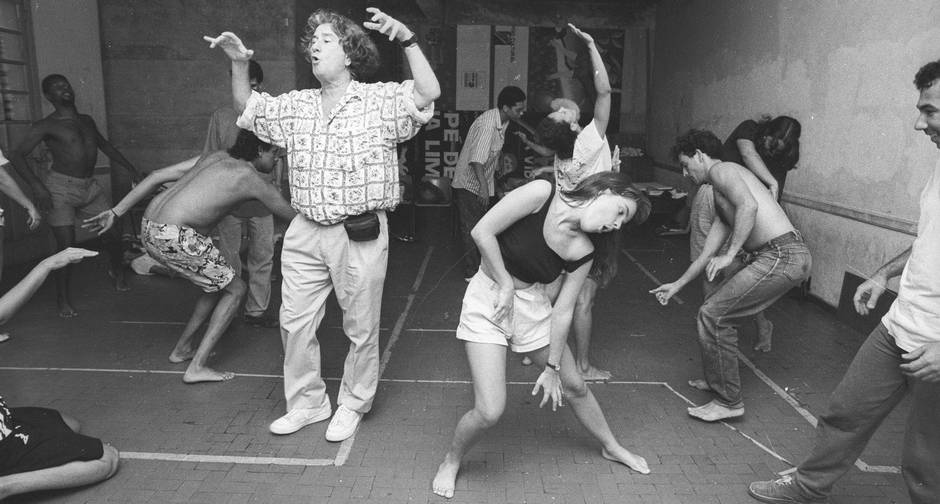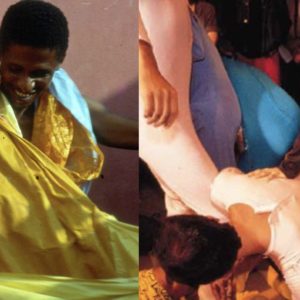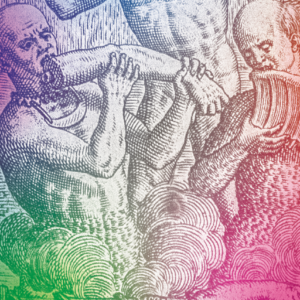
Summary: What does theater have to do with design? Theater of the Oppressed can provide great insights into recognizing and expanding the Designs of the Oppressed. Created by Augusto Boal in the 1970s, this form of theater became one of the most popular approaches for non-professional actors interested in doing politics through theater. The approach works by releasing the oppressed human development potential through rehearsing reactions to oppression in an aesthetic space. Similar explorations can also be done through participatory design and other designerly approaches that harness the aesthetics of the oppressed.
Audio lecture recorded for the online Designs of the Oppressed (2021) course.
Full transcript
The anthropophagy movement was very influential in many different art fields. I would focus on theater because, after World War II, Brazilians started to look at their country and see them concerning imperialism as a country that had to resist culturally. Otherwise, we would reproduce the American way of life without having the conditions to consume the same amount Americans were consuming then. The Brazilian modernization was going this way: only the elite people would leave the American way of life, whereas most people would live otherwise. They would have to pay for the country’s modernization and the American way of life of the national bourgeoisie in Brazil.
Some cultural producers, artists mainly, were critical of this condition. They thought this was not good for the national development or the cultural scene because we were reproducing art forms and content, life concepts, that were alien to our culture and would not help us to be original. One of these people was Augusto Boal. He studied in the United States, returned to Brazil, and worked in the Arena Theater during the ’50s. While there, he developed what later became known as Theater of the Oppressed. Newspaper theater was the first of these techniques created to avoid governmental censorship over the news and provide a critical interpretation of news items.
Boal was tortured, persecuted, and later exiled from Brazil. He moved to Argentina, Peru, and later to France, always writing many books that systematized Theater of the Oppressed as an overall approach for popular theater and political theater so that anyone could join a political play and understand that they were already acting in everyday life. Yes. That is the central tenet of Theater of the Oppressed: we are already actors of our lives. Everybody, every human being, has theater in their existential condition. That is why Boal said humans do not do theater; humans are theater. Therefore, we cannot separate one from the other. We play many characters in our lives. During a single day, we meet multiple people and play out those roles.
Why can’t we act for our liberation in a theater that will help us to organize against oppressors? That’s the basic premise of Theater of the Oppressed. It’s also called breaking the fourth wall because the audience is no longer an audience. The audience becomes the spect-actors. They join the play to try to rehearse their liberation and react to oppression.
The typical Theater of the Oppressed play has a protagonist who is an oppressed person and an antagonist who is an oppressor. Those will engage in oppressive interaction where the oppressed would always lose. Then the audience, the spect-actors, would perhaps try to change that reality because they get irritated by that situation. They would join the play, replace the actors, try out the reactions, and see what happens. Therefore, the play became an aesthetic space for imagining the revolution, imagining rehearsing some reactions and collective reactions even because we could have many different spect-actors join the play and try their ideas out.
Augusto Boal has spread this Theater of the Oppressed method with the concept of the Joker, which is a systematized multiplication of this method. Nowadays, there are hundreds or even thousands of schools spread across the world with this method. It’s very successful, very creative, very engaging to join.
Boal didn’t stop there, though. He wrote an essential book, perhaps the most important of his career, while he was on his deathbed, called Aesthetics of the Oppressed. In this book, he generalizes his experience with theater to any art, and that may include design. Suppose we see design as a kind of art in a general sense. In that case, we may think that there is a way of designing which is already practiced by everyday people, by people who are not from the bourgeoisie, who are not from the superior classes in society, and who have no control over the means of production.
The oppressed also have a different way of designing. If we follow the ideas of Alvaro Vieira Pinto, who says that designing is a natural faculty for human beings, that human beings are designing their lives all the time, they are even designing life projects, designing the techniques around them, and any different act is already technical, and it requires a design. Then we can understand that designs of the oppressed may mean bringing about, recognizing, and sharing what people are already designing together.
Taking the aesthetics of the oppressed and constructing designs of the oppressed out of that, we have to rehearse future situations where there will be a protagonist, the oppressed, and an antagonist, the oppressor. Through speculative design, future scenario envisioning, which is commonplace in design research, we can see how we can react to oppression in a designed way by displaying and featuring different aesthetic canons, different cultural references, and also a different content, a different purpose, not just talking about an alienated life where we celebrate eating and consuming costly things.
In designs of the oppressed, we emphasize the beauty of being a human being, being part of a group, being part of a society, and building up that society for the best ethical standards possible, which means avoiding the oppression of others. That’s, in a general sense, the utopia of Augusto Boal. Trying to end oppression, and will be the ultimate ethical stance that is also included in his aesthetics vision because it draws attention to the fact that the word ethics is included in the word aesthetics. It means aesthetics for him trying to express and feel with the senses what is being ethical and the best way of being human.
That also helps us to understand the aesthetic dimension of the becoming more concept of Paulo Freire, who said we can become more than being oppressed or oppressor. We can become human and relate in society in much more productive ways. If we get rid of oppression, our society can develop in so many different ways, and not just ourselves individually would benefit from that. Still, we will have a different society that will be devoid of any class distinction, racial distinction, ethnicity distinction, capacity distinction, and so on.
This vision helps to design away from the oppressor side, designing a full existential potential to realize all the capacities, faculties, and talents we bring to being human. Perhaps, it can help to be human in a different way because every human being has the same essence. Still, the way we display this essence, our form, our shapes, and our expressions are different, and that brings about a wealthy society.

